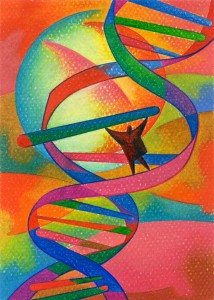How do you become a more innovative leader? What skills are required to help you build an organization that focuses on your client’s needs and increases the opportunity to create breakthrough products and services? Last week, we heard about process and innovation and how they can work well together, this week I share a discovery process that makes you a better leader. This process is based on a book called The Innovators DNA, by Jeffrey H. Dyer, Hal B. Gregersen, and Clayton M. Christensen. I can’t recommend the book highly enough. I’m sharing a platform with Jeff in March and thought you might enjoy a preview of a key strategy he will be sharing at the conference.
Innovation can provide an edge in your marketplace. How can you provide your team with more innovative leadership? How do we as leaders avoid falling into the trap of buzzword bingo? The Innovator’s DNA is a great place to start. There are many great ideas in the book but one that stands out for me was the Discovery process they share. This process can be used up and down the organization. My clients need practical, proven tools to help their organizations excel as innovators. In the book, the authors share four patterns of action to help leaders build more innovative organizations. I’ll share the process here but the book is going out to many of my best clients in the coming week. There are so many great ideas in the book. If you would like to know more, follow the link I’ll share to the conference Jeff will be presenting at in March.
The discovery process is based on the idea that leaders can learn and excel in innovation. The first action of discovery is questioning. Leaders must become effective not only at questioning what is, but what could be. Many consulting books tell you about how to develop great questions. This book uses questions to identify potential gaps in your business. It allows you to leave business as usual to move you towards a future of your own design. This subtle change can provide your organization unlimited opportunities.
The second action of discovery is observation. This is not just looking at the bigger picture of how your business operates, but what experiences might your customer really want? Several of Steve Jobs innovations where made up of these types of smaller observations. The key question Steve asked was, “How is our product or service being experienced by our customers?” He broke down his processes into smaller chunks and then looked at how he could improve all aspects of the customer experience. He put a premium on design in his breakthrough products. You can only learn this by slowing down enough to observe how they interact with you products and services.
The third action of discovery is experimenting. How many different ways can we create a product or service experience? Great leaders are tinkerers. Think of Jeff Bezos who walks around to make things incrementally better. Trying different ideas to find not only a good solution, but continuing to look for ways to upgrade the way you manage your business. Great leaders allow for experimentation. We live in a time where business delivery is measured in microseconds. How do you balance both short and long term goals to create a breakthrough?
The final action of discovery is networking. Innovative leaders are connected. The biggest difference I see among my clients in emerging technologies and my clients in more traditional industries is that level of connectedness. Most start-up CEOs are in a constant state of building out the network. This network provides them with resources and ideas that keep them growing and evolving. So how connected are you as a leader?
When you consider these four actions of innovation, what makes them even more amazing is that they are all able to be learned and taught. There is no magic bullet here, but in the right combination they can make you unstoppable. If you have a goal of developing a more innovative organization in the coming year, you should buy The Innovator’s DNA. I know it will change the way you lead and manage your organization.
If you’re as excited as I am about the possibilities that innovation and collaboration has to offer, you might want to consider attending the Delivering High Performance Collaboration Conference . See you there.





Be the first to comment on "Can Entrepreneurs Use a Discovery Process to Create Innovation DNA?"